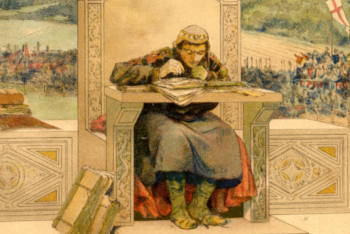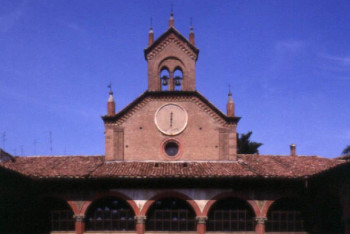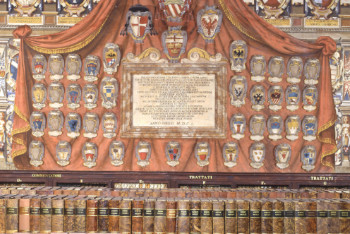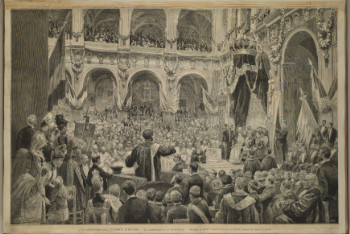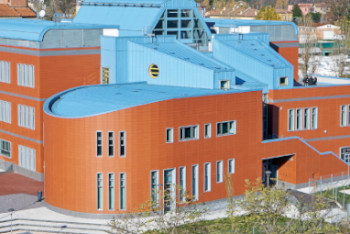Nine centuries of history
Nine centuries of Alma Mater Studiorum: from as far back as 1088, conventionally referred to as the year in which the Studium of Bologna was founded, through the bustling Middle Ages and the eclectic Renaissance to the stagnation of the modern age and its revival in the contemporary era. The oldest University in the Western world presents itself.
11th-12th centuries - The birth of the Studium and the Commune
“The School of Bologna was established independently, it arose and stood out as a private school.” It was with these words that Carducci celebrated the birth of the Alma Mater Studiorum, during celebrations for its 8th Centenary in 1888. The prophet-poet himself admitted the artificiality of the centenary, as he acknowledged that it was impossible to determine the exact date it was founded, given that the Studium of Bologna was not established at the behest of a sovereign or an organised group of teachers, but was the outcome of the spontaneous and informal initiative of a few students.
It was precisely thanks to them that Bologna quickly became known not only as “La Dotta” (The Learned) but also as “La Grassa” (The Fat) city. It was a rich and powerful medieval metropolis, capable of attracting and accommodating hundreds of wealthy young people, who brought with them not only books and servants but also a substantial amount of money.
This is why the Commune immediately forged an unbreakable bond with its Studium and supported it, at least during the first few centuries, with laws and decrees that protected and favoured it.
These two institutions, the Commune and the university, both born under the guidance of the teacher Irnerius, were completely intertwined, under porticoes, in private homes, in monasteries and in city areas rented out as required for lessons and assemblies.
Read more about the history of the University of Bologna in the 11th and 12th centuries
13th century - The students’ Universities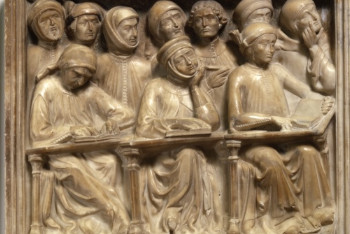
Students attending the innovative Law Schools soon formed mutual support associations. Over time, these were structured according to their places of origin (Nationes) until they merged into prestigious supra-regional guilds called Universitates.
From then on, the Jurists and Artists earnt an unparalleled social and political reputation: they were vital to a nascent Europe that absolutely needed solid legal and cultural foundations.
Read more about the history of the University of Bologna in the 13th century
14th century - Towards Commune management
As time went by, students lost their autonomy, not only in their management bodies but also in city councils, suffering greater influence from local and papal authorities.
Even the teachers, who in the meantime had formed the College of Doctors, had to accept the disciplinary measures imposed from above, and were subject to them even more from the following century, when they became public employees, who were paid with income from trade tariffs.
A slow decline followed, with professorships inevitably becoming more province-based, once again closely linked to the fate of the city, which also suffered the rise of neighbouring rivals and the constant pressure of papal power, eager to regain full control over its domains.
Read more about the history of the University of Bologna in the 14th century
15th century - The Alma Mater flourishes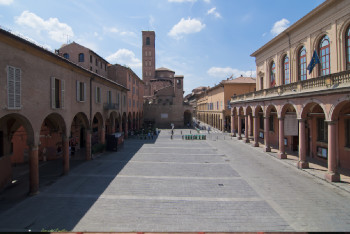
However, because of its fame, the Studium was still able to attract students from all over the world. Future popes, cardinals and intellectuals continued to graduate from Law schools, whereas art schools, thanks to the cultural reforms of Renaissance humanism, thrived with new disciplines. It was the fruitful season of the Bentivoglio family, in which the de facto lords of the city supported the illustrious teachers, gaining in propaganda and praise in line with what was happening in the other great courts of Italy.
Read more about the history of the University of Bologna in the 15th century
16th century - The reform of the Studium
This irreparably led to a decisive break, which saw the Commune and its University lose the shared foundation of their success: freedom. In the mid-16th century, after the Council of Trent, the popes and their legates managed to impose their influence not only on local politics but also on the University. Senators on the one hand, and teachers on the other hand, ended up submitting to their will.
When the Archiginnasio Palace was built, the partnership between the two institutions, which up to then had benefited from the University being spread out throughout the city, came to an end. In this way, for the first time ever, the various Schools were grouped together in a single location, under the watchful eye of Rome, which repealed the student’s rectorship and imposed the profession of faith, thus pushing away many students of other faiths.
Read more about the history of the University of Bologna in the 16th century
17th-18th centuries - The crisis of the Studium and the revival of the Academy of Sciences of the Institute of Bologna 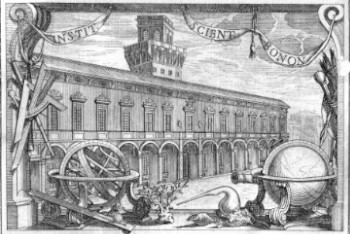
The city and the Studium therefore experienced a period of sluggishness and crisis lasting two centuries, and only a few names managed to emerge from this period of isolation. The 18th-century Academy of Sciences of the Institute of Bologna provided them with a chance to react to the restrictions of the Church and the indolence of the political and aristocratic classes, creating a direct link with the vitality that the rest of Europe was experiencing.
Read more about the history of the University of Bologna in the 17th and18th century
19th century - A difficult relaunch
Change finally came from outside, brought about by Napoleon Bonaparte. With the Republic and, later, the Kingdom of Italy, the Studium was turned into a public University and relocated to the 16th-century Palazzo Poggi, around which the city’s new artistic and cultural district was centred.
But these changes, partly implemented and partly repealed with the return of the papacy, were not enough to improve the destiny of Bologna and of the Alma Mater.
It was not until the Italian Unification, and with it the search for a common history, that Bologna and its ancient Studium were, once again, considered the backbone of the entire country.
Read more about the history of the University of Bologna in the 19th century
20th century - The Alma Mater in the global world 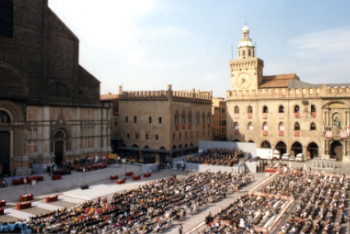
The slow rebirth of the Alma Mater and its international relaunch were inaugurated in 1888 on the occasion of the 8th Centenary celebrations.
The relationship with the city was also reconsidered and, at the turn of the 20th century, the University began to penetrate into the urban fabric, occupying ancient buildings and building new ones.
The two wars slowed down this project, which, however, was resumed with greater strength and determination after the Second World War.
Not even the Years of Lead stood in the way of joint improvements strongly demanded, with great determination, by an entire generation of young people and students, just as it occurred in the Middle Ages.
This successful alliance between the University and the city was finally demonstrated during the celebration of the 9th Centenary of the Studium, which, just like ceremonies in the past, took place in the city centre. In Piazza Maggiore, 430 European rectors, along with 372 rectors from all over the world, signed the Magna Charta Universitatum. Still today, it is the location for celebrating the independence and freedom of teaching, which have always been the cornerstones of the University of Bologna. On that occasion, it was, once again, recognised as the mother of all universities, namely as the Alma Mater Studiorum.
Read more about the history of the University of Bologna in the 20th century
21st century - A widespread and sustainable university
Towards the end of the last century, when new forms of university autonomy were introduced, the Alma Mater embarked on a project aimed at relocating some of its courses, which led to the first Multicampus being set up in Italy, now extending throughout the Romagna region. Meanwhile, it has continued to expand in the city centre of Bologna and its suburbs, developing an ever-increasing interest in new technologies and respect for the environment, which are of crucial importance if it is to remain competitive and at the forefront also in the 21st century.
Read more about the history of the University of Bologna in the 21th century
Watch the video "Nine centuries of history"
Find out more
-
Yearbook
The Yearbook is a publication that sets out to photograph the Alma Mater and its activities and productions over time.
Published -
Historical Archive
The Bologna University Historical Archive, nowadays possesses all the deeds and documents produced or received by offices since 1860.
Published

